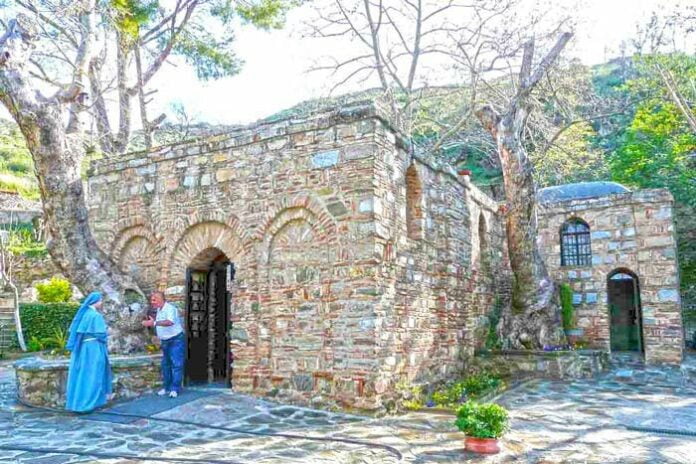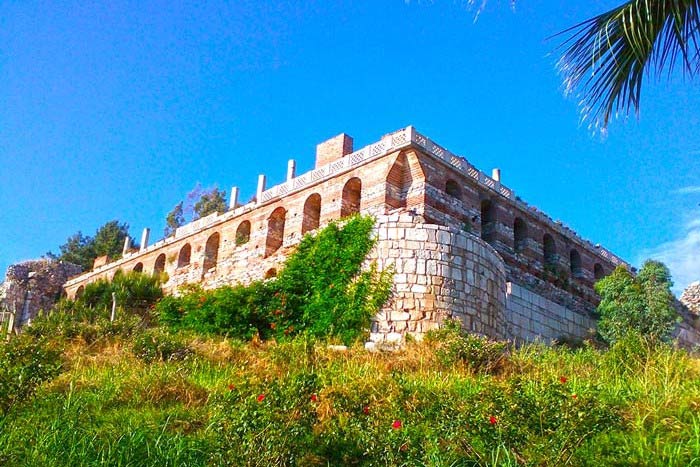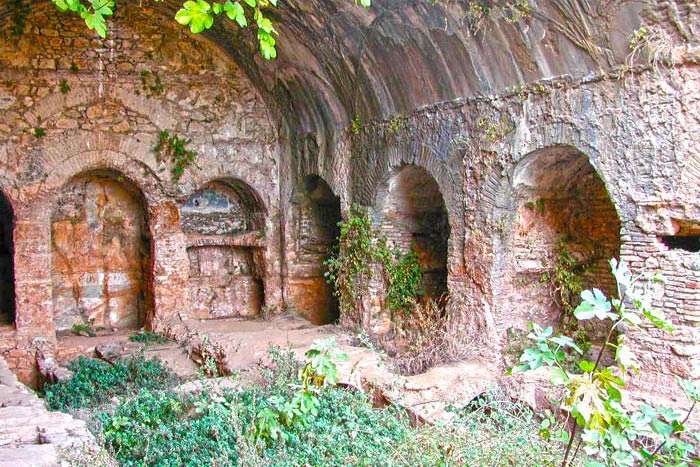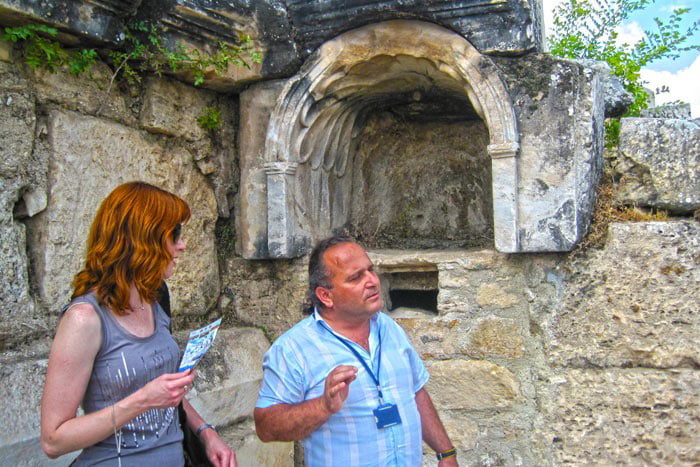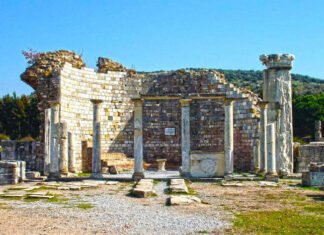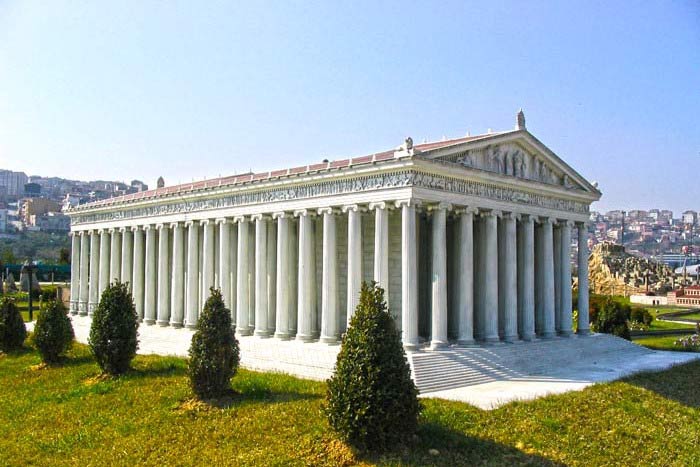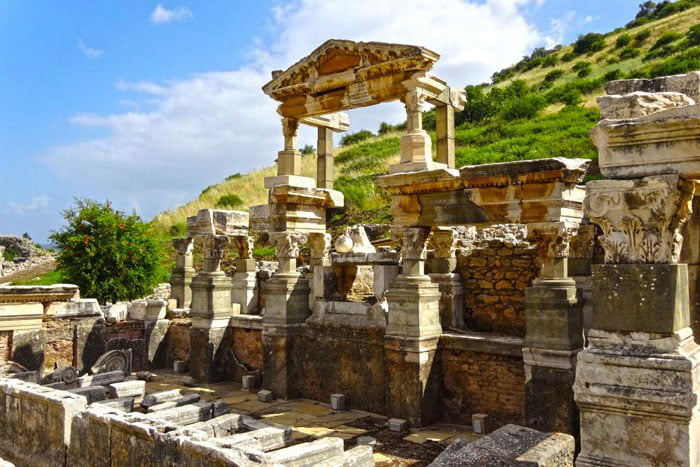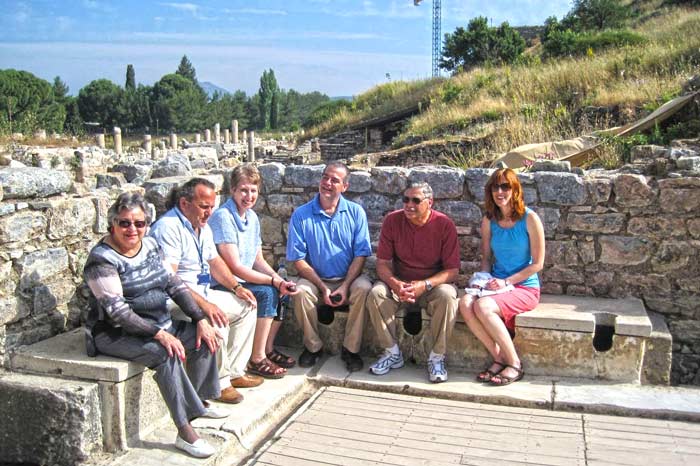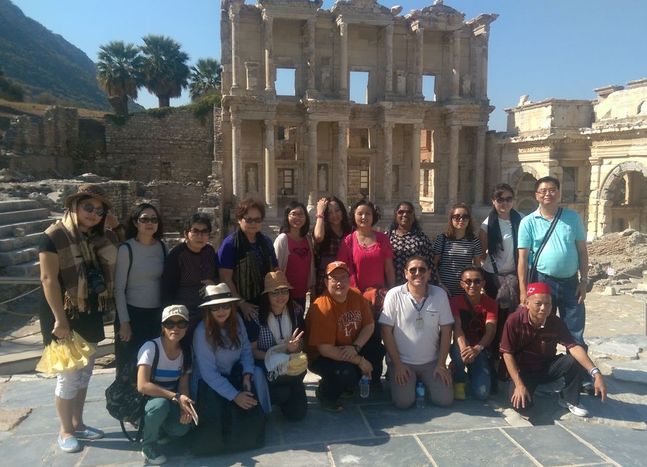Daily Ephesus Tour – Catherine Emmerich
Daily Ephesus Tour – in the 19th century a German nun; Catherine Emmerich, had visions of Mary in Ephesus though she had never been in this area. Based on her description, the priests from Izmir discovered the foundations of the old homestead on a wooded slope of Bulbuldagı (the Hill of Nightingales); also known as Koressos, near Ephesus. The house was dated to the 6th century AD, but some of its fragments came from earlier times; perhaps even from the first century CE.

Although the Catholic Church as the home of Mary has never officially recognized the place, many gestures made by the popes authenticated its history in the eyes of the faithful. First, Pope Leo XIII blessed the House of the Virgin Mary during his pilgrimage in 1896. Secondly, Pope Pius XII gave the House of the Virgin Mary the status of a Holy Place in 1951. This privilege was subsequently confirmed by Pope John XXIII.
Finally, Pope Paul VI paid a visit in 1967. Since then the House of the Virgin Mary has become a place of pilgrimage for the faithful. In more recent history, Pope John Paul II, in 1979 and, more also visited the House of the Virgin Mary recently – in 2006 – by Pope Benedict XVI “Daily Ephesus Tour”.
Daily Ephesus Tour – her life in Ephesus

There is none decisive historical evidence to support the theory that Mary spent the last years of her life in Ephesus. However, some indications testify in favor of the theory. The first one is the documented presence of St. John in Ephesus. Jesus entrusted him to take care of his mother before dying on the cross. In Selcuk, we can even see the tomb of St. John and his basilica. The second premise is the existence in Ephesus of the Church of St. Mary. It was the first temple devoted to Mary, the mother of Jesus.
Council of Ephesus
Daily Ephesus Tour – additional arguments brought during the debate over the authenticity; of the House of the Virgin Mary are the choice of Ephesus on the venue of the Council of Ephesus. It was convened in 431 to resolve the dispute concerning the determination of the unification of human and divine nature in Jesus Christ and the title of Mary as the Mother of God. Additionally, the Greek inhabitants of the nearby village of Sirince had the custom of pilgrimages to a place called Panaya Kapulu to celebrate the day of the Dormition of the Virgin Mary.
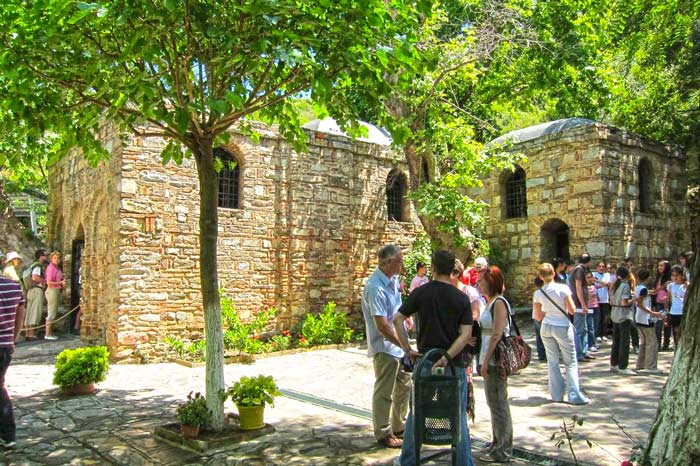
In the 19th century, a German nun Catherine Emmerich; had visions of Mary in Ephesus though she had never been in this area. Based on her description, the priests from Izmir discovered the foundations of the old homestead on a wooded slope of Bulbuldagı (the Hill of Nightingales); also known as Koressos, near Ephesus. The house was dated to the 6th century AD; but some of its fragments came from earlier times, perhaps even from the first century BC.
Although the Catholic Church as the home of Mary has never officially recognized the place, many gestures made by the popes authenticated its history in the eyes of the faithful. First, Pope Leo XIII blessed the House of the Virgin Mary during his pilgrimage in 1896. Secondly, Pope Pius XII gave the House of the Virgin Mary the status of a Holy Place in 1951. Pope John XXIII subsequently confirmed this privilege. Finally, Pope Paul VI paid a visit in 1967.
House of the Virgin Mary – House of the Virgin Mary
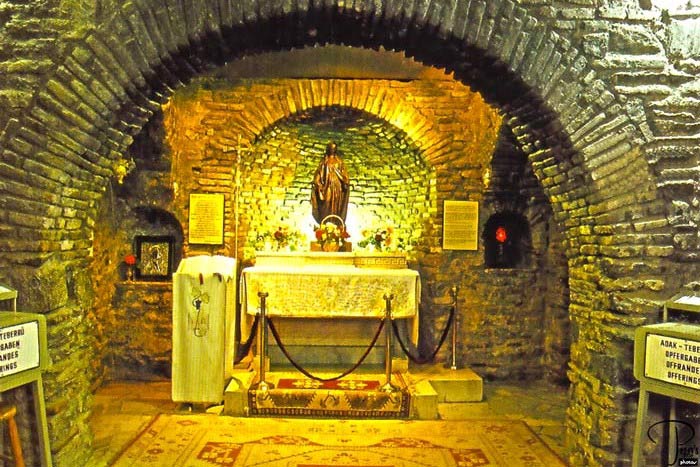
Since then the House of the Virgin Mary has become a place of pilgrimage for the faithful. In more recent history, Pope John Paul II, in 1979 and, more also visited the House of the Virgin Mary recently – in 2006 – by Pope Benedict XVI.
House of the Virgin Mary – There is none decisive historical evidence to support the theory that Mary spent the last years of her life in Ephesus. However, some indications testify in favor of the theory. The first one is the documented presence of St. John in Ephesus. Jesus entrusted him to take care of his mother before dying on the cross. In Selcuk, we can even see the tomb of St. John and his basilica. The second premise is the existence in Ephesus of the Church of St. Mary.
It was the first temple devoted to Mary, the mother of Jesus. Additional arguments brought during the debate over the authenticity of the House of the Virgin Mary are the choice of Ephesus on the venue of the Council of Ephesus.
It was convened in 431 to resolve the dispute concerning the determination of the unification of human and divine nature in Jesus Christ and the title of Mary as the Mother of God. Additionally, the Greek inhabitants of the nearby village of Sirince had the custom of pilgrimages to a place called Panaya Kapulu to celebrate the day of the Dormition of the Virgin Mary.
We are specialists on doing tailor-made tours like Ephesus guided tours. So, please contact us and we will make the dream tour in Turkey for you.
We are also so happy to introduce private Bulgaria & Turkey tours and to all our visitors to get more about Bulgaria please check private tours balkan, about Turkey please check private fun tour Istanbul.

